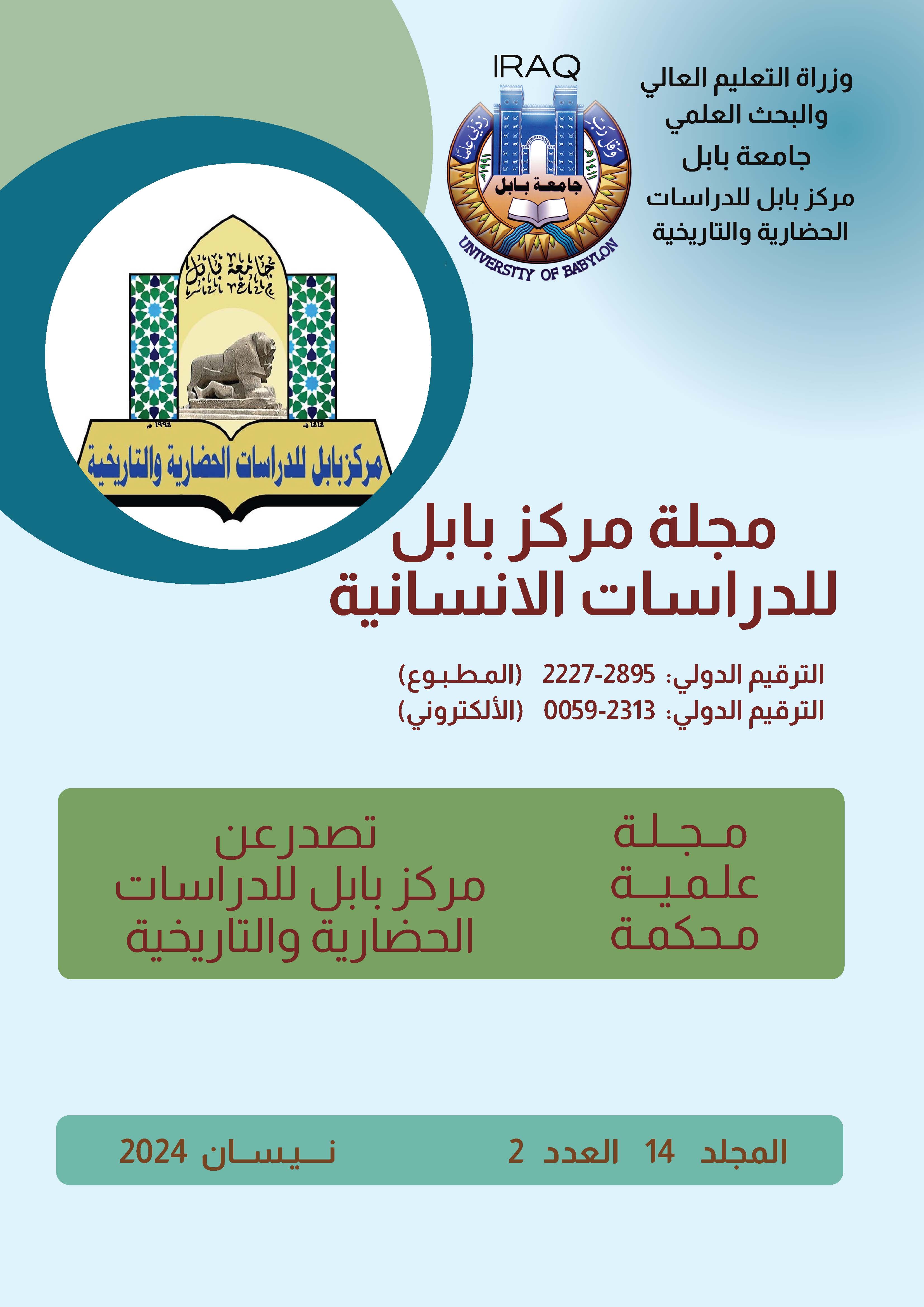Semantic Diversity of the morphological form of “Fa'il” in the hadith of: “Ali Qasim of Hell and Paradise” Morphological-semantic study
Keywords:
semantic diversity, fa’il form, Qasim, morphological structureAbstract
The research in your hands sheds light on one of the famous prophetic hadiths reported from the Great Prophet Muhammad, may God bless him and his family, regarding Imam Ali bin Abi Talib, peace be upon him. It is a hadith (Ali is the divider of Hell and Paradise). The research aims to analyze the hadith semantically by clarifying the meaning of the word (al-qaseem), and the meaning and purpose that this word leads to, in addition to the general meaning resulting from the composition of the words, with the help of morphological investigations in this section. The research reaches a conclusion from which, in light of this analysis, it becomes clear the merit of this great personality, and his great influence and clear role in defining the features of true faith, the foundations of which were laid by the Noble Prophet Muhammad, may God’s prayers and peace be upon him and his family, and even determining the fate of humanity, as is apparent. The results show the virtue of Ali’s personality, which requires commitment to loving it and working according to its behavior and approach, as it is the path to salvation. The approach followed in this research is the descriptive approach based on extrapolating, analyzing and interpreting the hadith. The reason that includes wisdom is evident from the use by the Greatest Prophet of the morphological form (fa'il) without other forms, despite the possibility of benefiting from other forms.







